The amphibious warfare ship HMS Bulwark is the current flagship of the
Royal Navy. Last Sunday I had the chance to go aboard her at
Greenwich, since she was open to the public as a PR exercise; tickets
vanished quite fast. Images follow:
cc-by-sa on
everything.
While I'd normally expect "bull'ərk", everyone aboard was very
careful to pronounce the name "bull-walk".
The day started interestingly, with a view of the memorial to
Joseph René Bellot,
lost while on a search for the Franklin expedition.
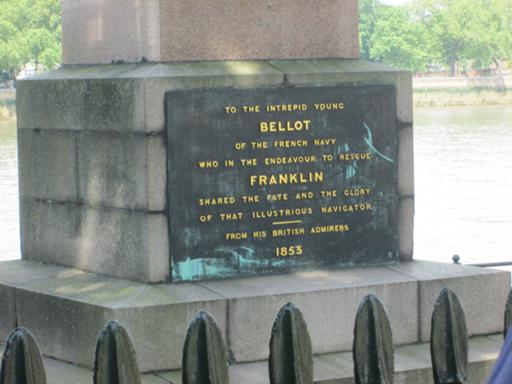
As we queued to get in, we shuffled past the inflatable Royal Marine.
Clearly the neck is a vulnerable point, which is why they don't have
them.
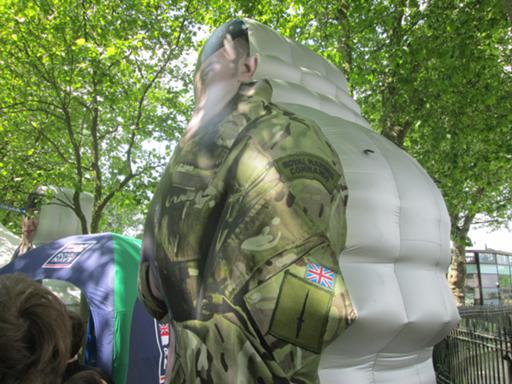
First sight of Bulwark, moored a little up the river from Greenwich Pier.
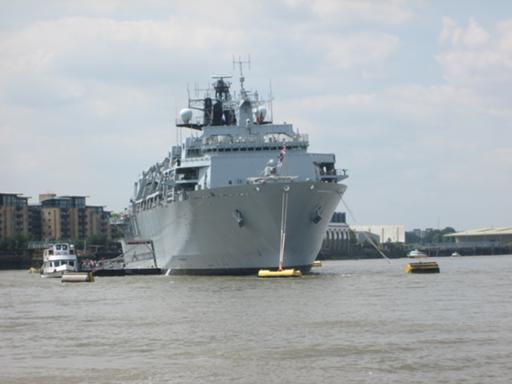
Starboard side looking forward.
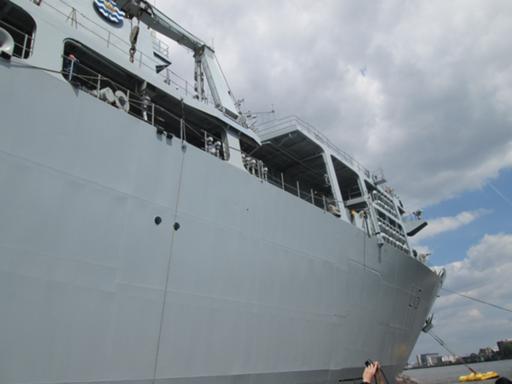
Starboard side looking aft, as we waited to go aboard.
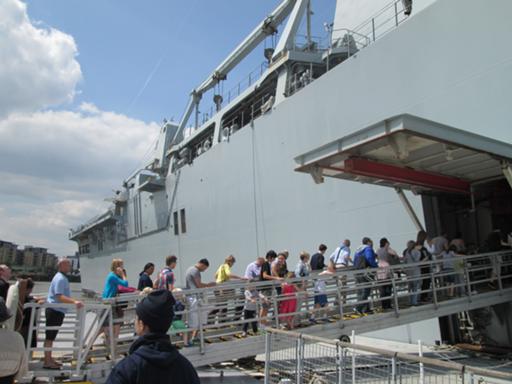
Vehicle deck, looking forward from starboard entrance. This huge space
really does take up the bulk of the ship's internal volume.
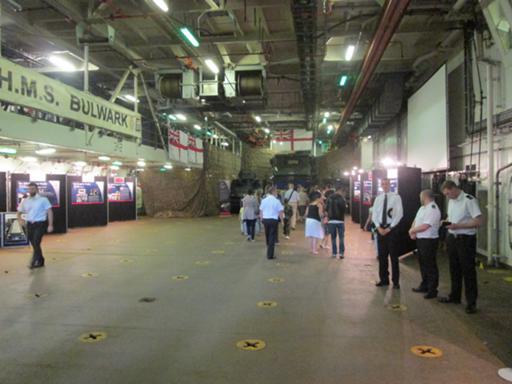
The ramp aft from the vehicle deck up to the flight deck.
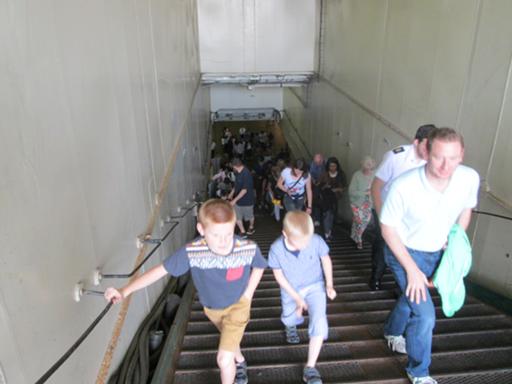
General view of flight deck, looking forward.
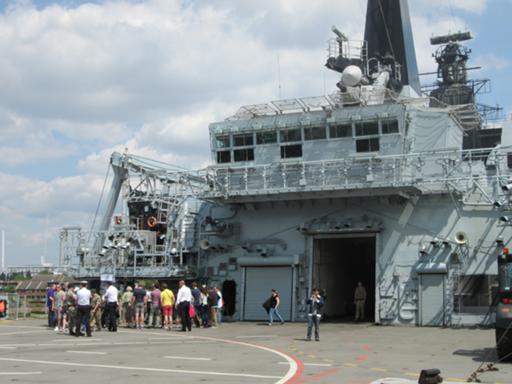
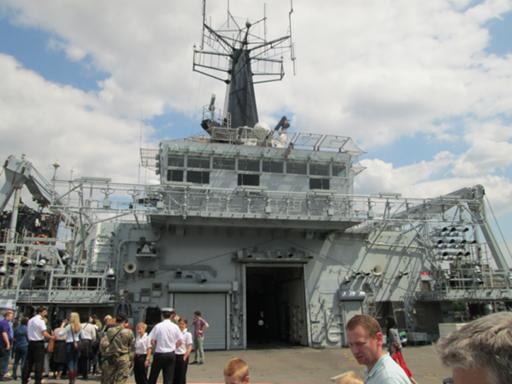
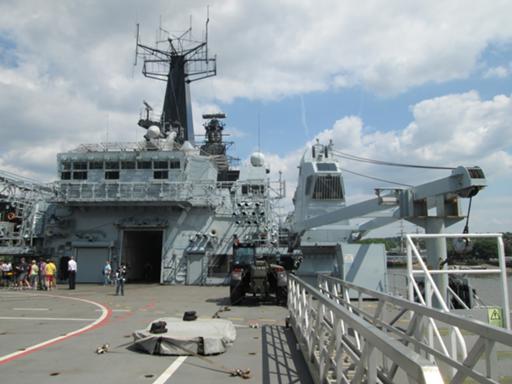
Over the side of the flight deck; passenger boat, gun mount, and in
the mid-ground Cutty Sark and the entrance to Greenwich Foot Tunnel.
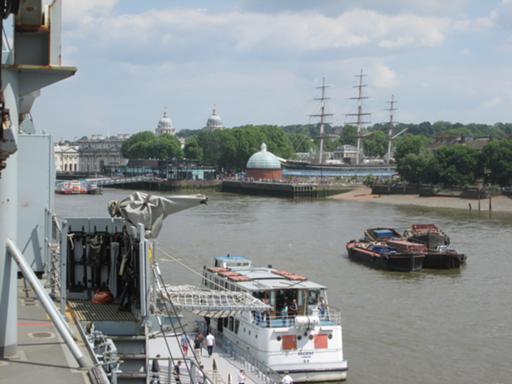
Flight deck port aft, with ship recognition letters.
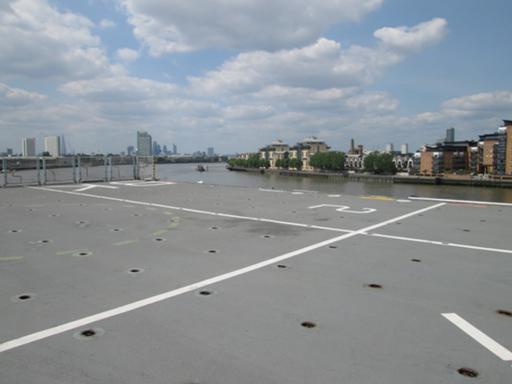
Flight deck port forward, the Chinook landing zone (starboard side is
obstructed by the crane).
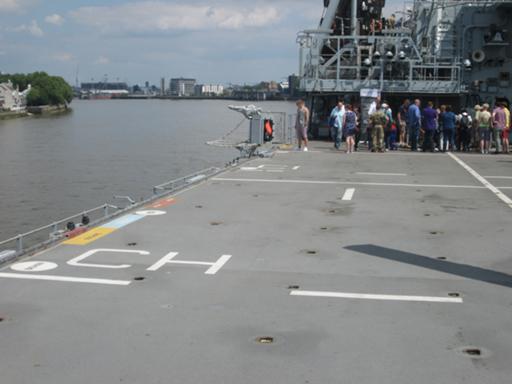
The ship's bell.
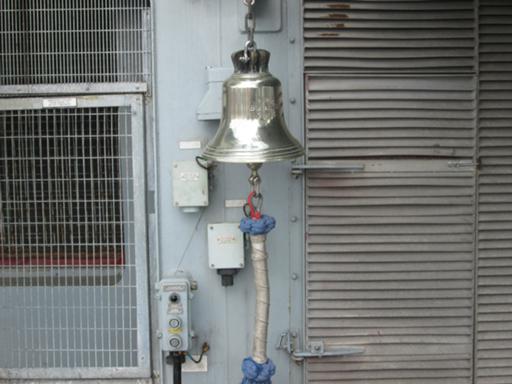
A Sea King on the flight deck.
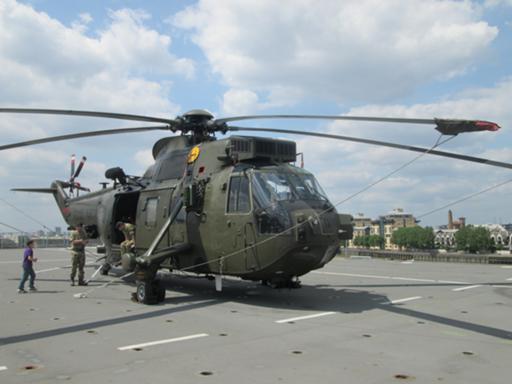
Sea King decoy launcher.
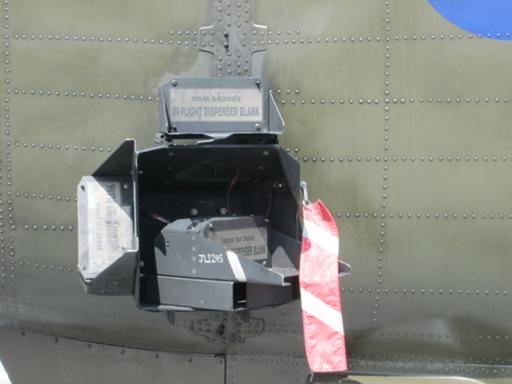
Sea King with observation bubble.
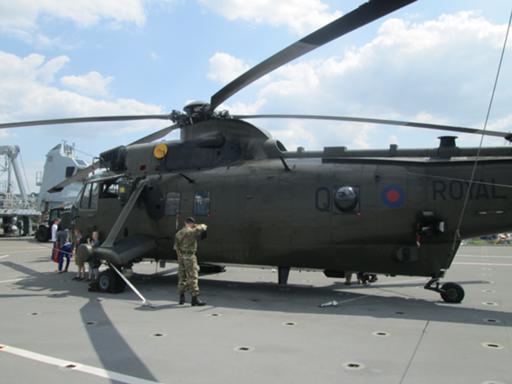
Pressurised nitrogen bottle under Sea King port strut.
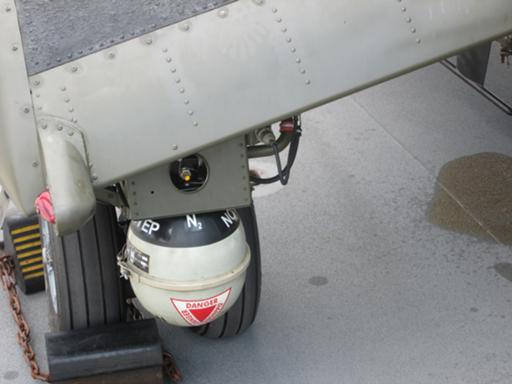
Sea King nose.
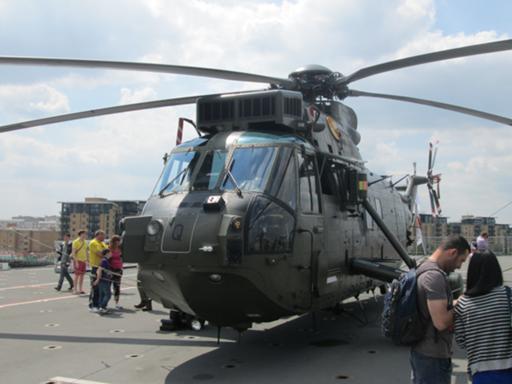
External hatch, port side, just forward of the flight deck. I'm
slightly pleased to know that the term "citadel" is still in use for
NBC sealing precautions; it's something I remember from
the County-class destroyer HMS London
when I had the chance to go over her early in 1982, just before she
was sold to Pakistan.
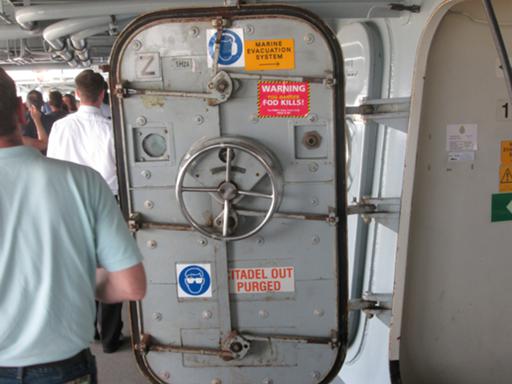
Lifebelt forward of that hatch, and escape trunk.
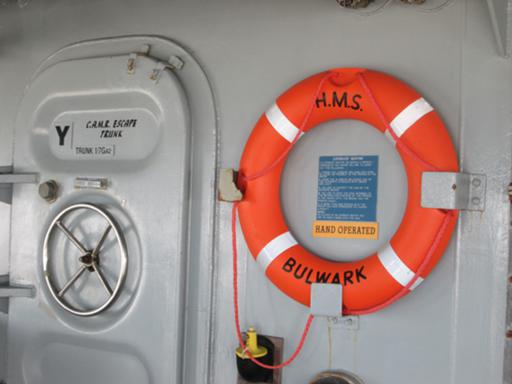
Man Overboard, or MOB, alarm. To summon mob, say something disparaging
about the Marines.
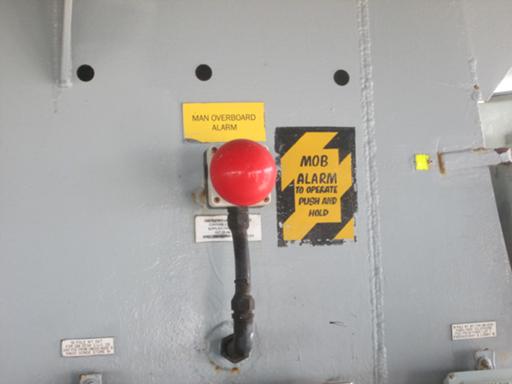
A random winch on the port side. Purpose not at all obvious.
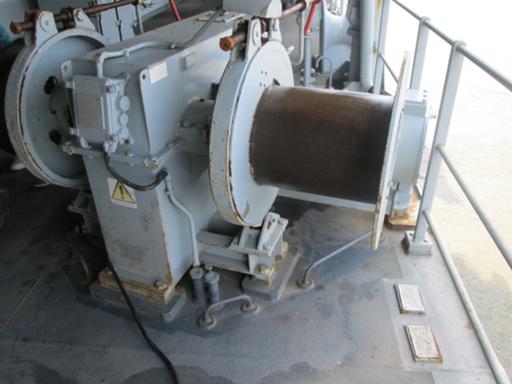
Command centre. This is the section for "landed" troops; the commodore
in charge of the overall operation, and the brigadier commanding
Marines, would sit at these red desks.
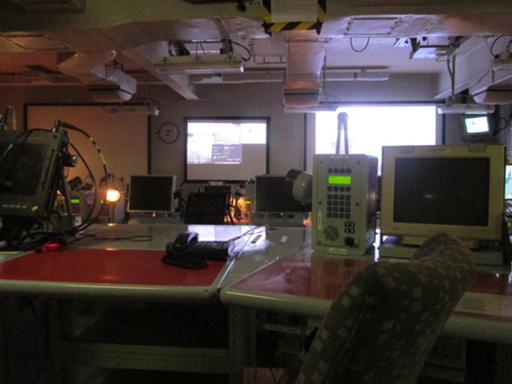
Off to starboard of that, this section is for managing the actual
ship. Her captain would sit in the raised area at centre, while
individual control stations are in the area to the left.
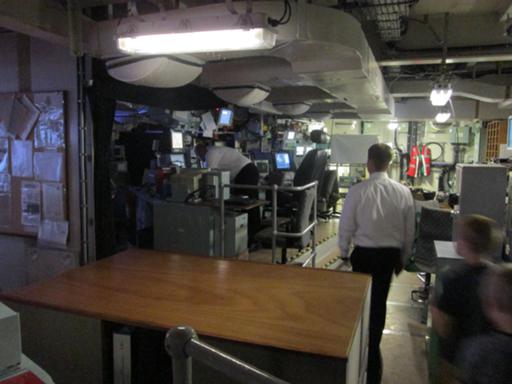
Aft of the landed-command area, the amphibious command area deals with
small craft moving near the ship.
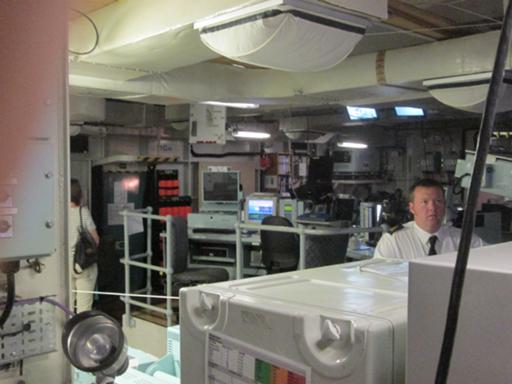
Aft of ship command, next to amphibious command, this section was only
roughly described to us but appears to be related to damage control
and other internal activities.
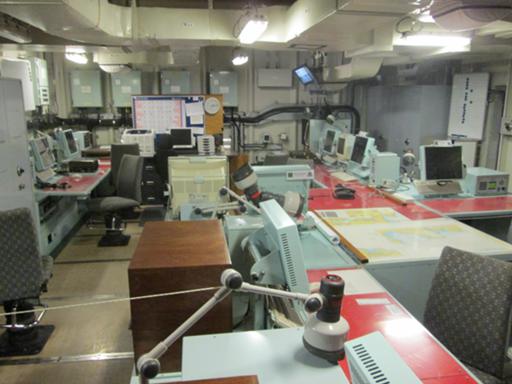
L7 (FN MAG) GPMG, laid out as part of the Royal Marine kit.
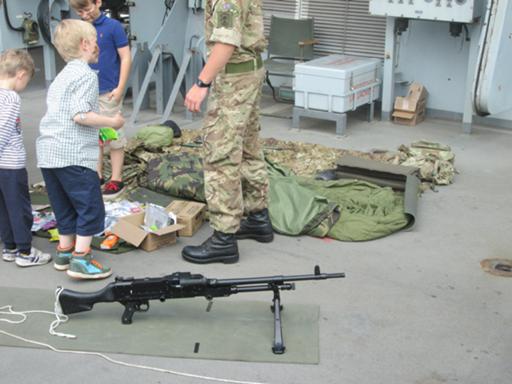
Rations, including tiny bottles of Tabasco.
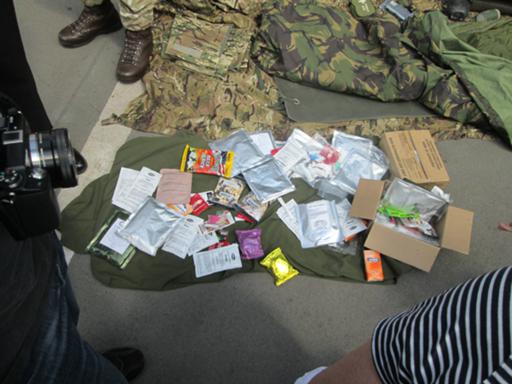
Various camouflaged cloths and draperies.
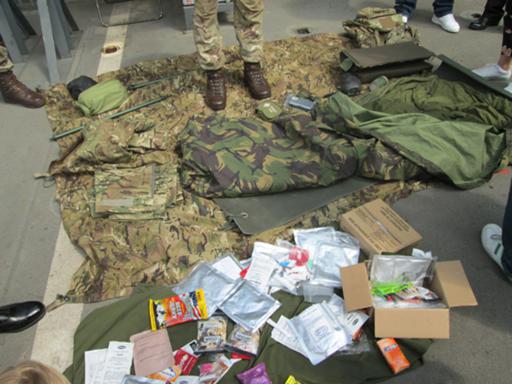
One of the gun mounts (note reminder to right of controls). I'm
assuming that this is one of the 30mm cannon, though I thought the
ship only carried two of those.
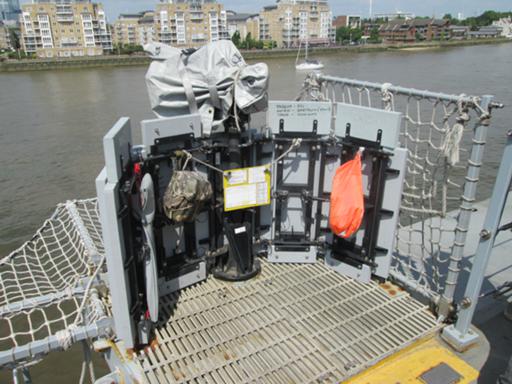
The possibilities for confusion are endless.
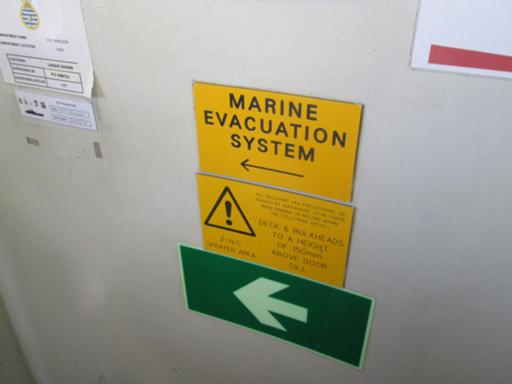
Vehicle deck, port side looking aft. The LCVPs are clearly a very
tight fit; two more are squeezed in behind these two, taking advantage
of the side-mounted bridge and aft gate on the new Mk 5.
It was suggested to me by our guide that the whole vehicle deck
could be flooded, not just this lower area. (He actually claimed that
the vehicle deck would be lowered to achieve this, but it looked
pretty firmly fixed to the sides.)
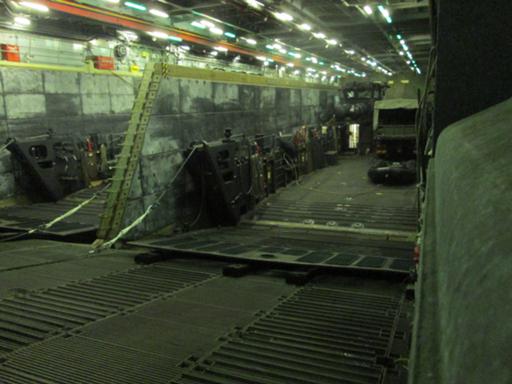
The other visible LCVP, on the starboard side. The guide was very
proud that they could operate for fourteen days without support.
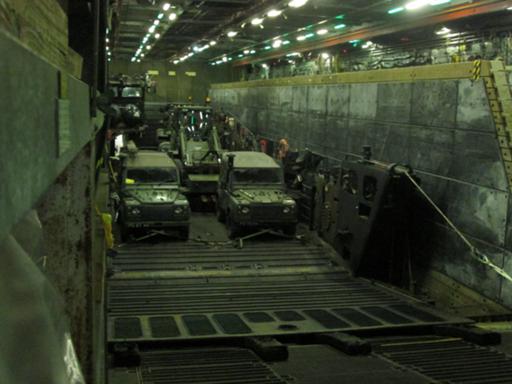
Beach matting for getting vehicles ashore in soft sand. The ramp up to
the flight deck is visible above.
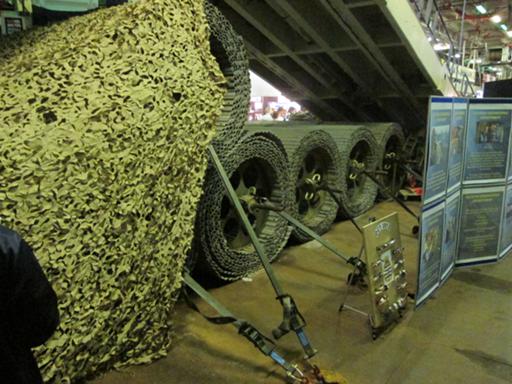
IRC, Inflatable Raiding Craft, used by the Marines to ensure that the
beach is safe for LCVPs to come ashore. Note caged propeller for
shallow or debris-choked water.
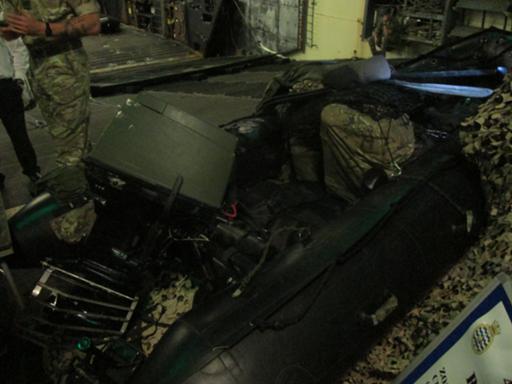
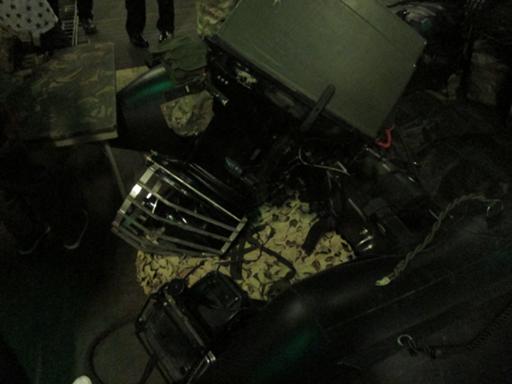
Hippo BRV, Beach
Recovery Vehicle, generally known as "Frank the Tank"; built on the
chassis of a Leopard 1A5 tank and used to retrieve vehicles that bog
down or are damaged during a landing.
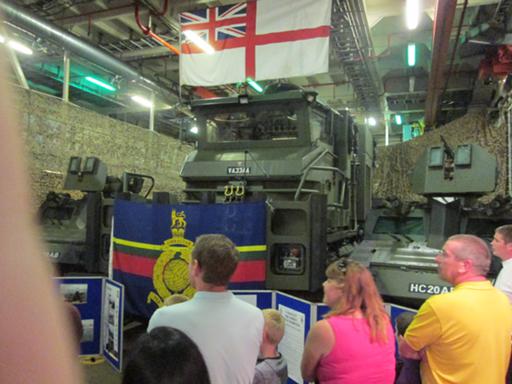
BvS 10 Vikings, fully
amphibious (5 knots) but lightly armoured transports for Marines. The
usual gun is another L7 GPMG, which can then be used dismounted.
Everyone we met was carefully enthusiastic about all the kit they
used, but the chap talking about these particularly liked them.
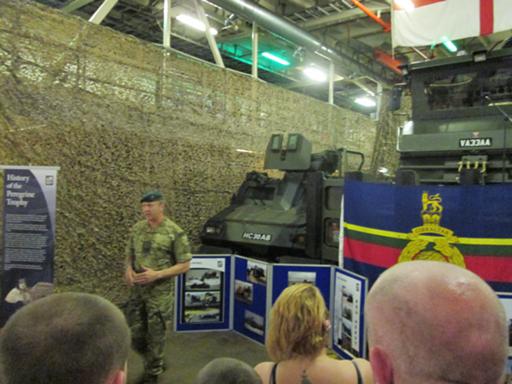
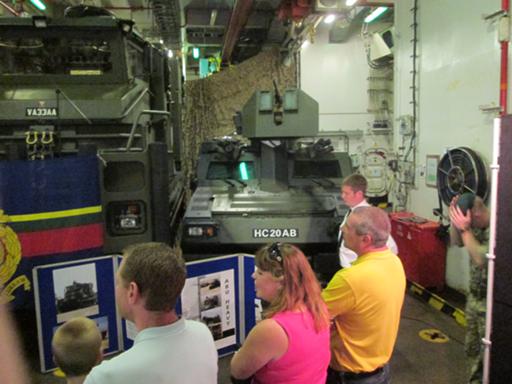
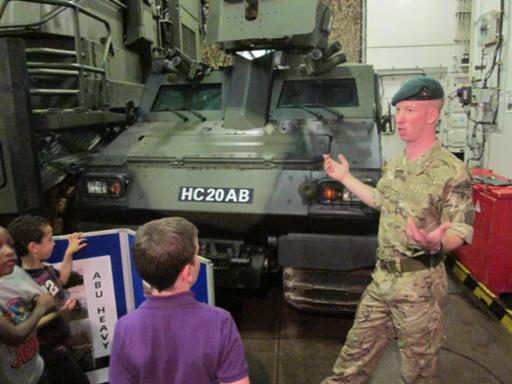
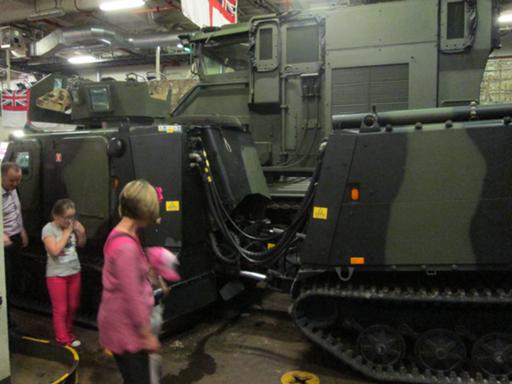
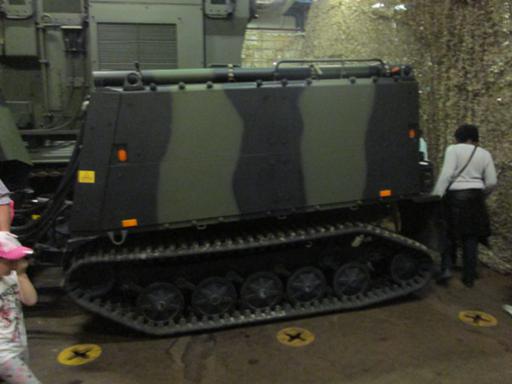
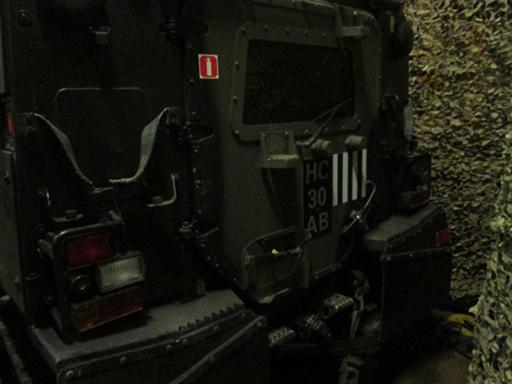
L118 Light Gun, 105mm
howitzer generally towed behind a Land Rover or Pinzgauer.
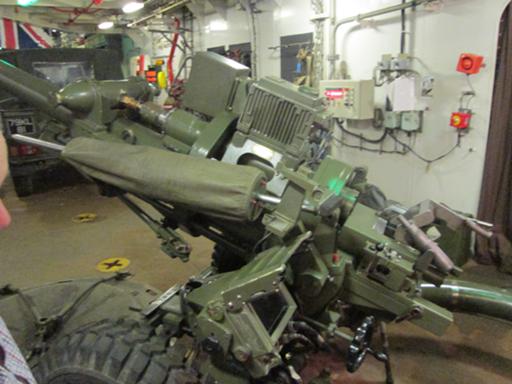
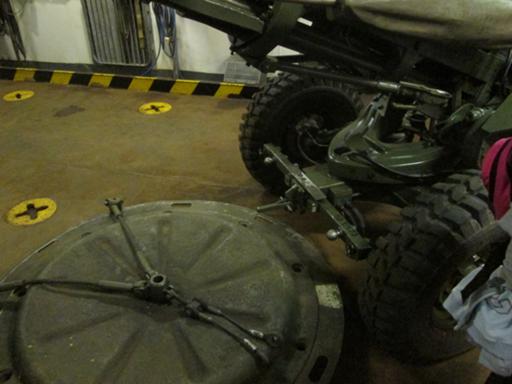
Vents from the carbon dioxide store. The vehicle deck is a huge open
area, and seems to me a major vulnerability. Of course, in theory a
command ship like Bulwark is not meant to be too much in harm's way.
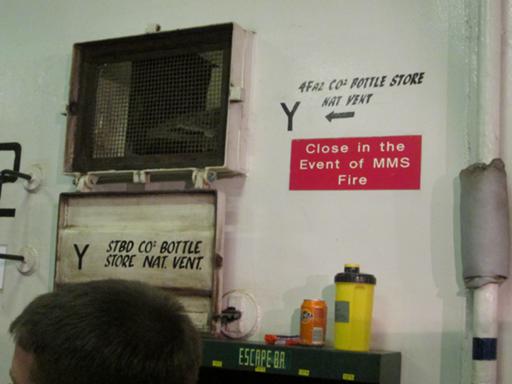
Controls for the ramp to the flight deck.
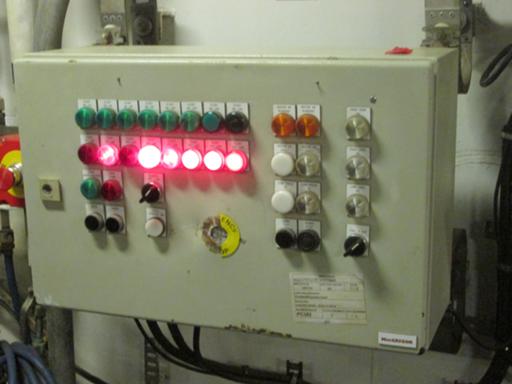
Lifebuoy cover.
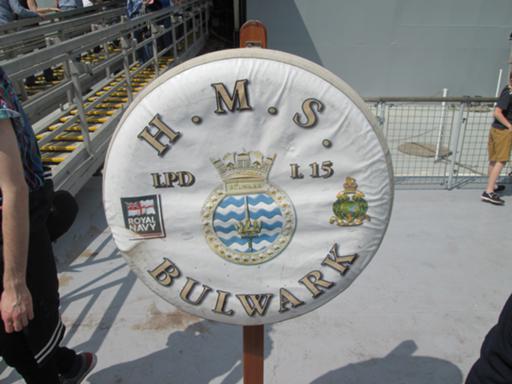
Life rafts on the starboard side, and what I think may be a Seagnat
decoy launcher.
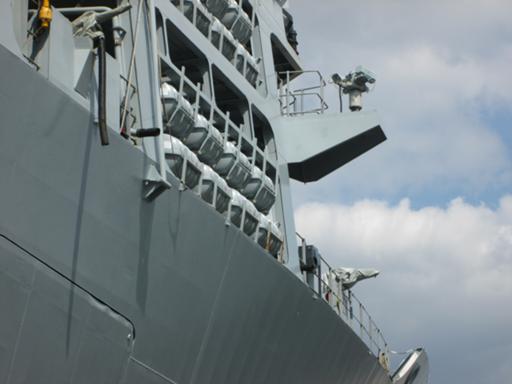
Starboard side aft, flight deck and gun mount.
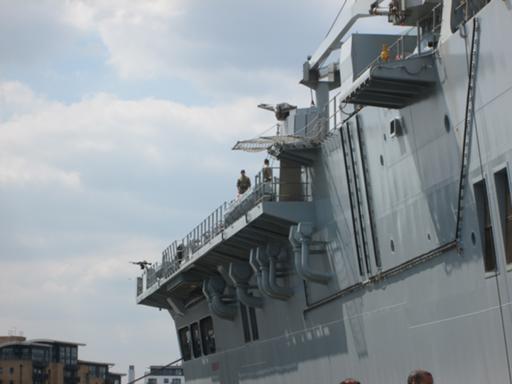
Starboard midships gradually moving forward, a remarkable confusion of
machinery.
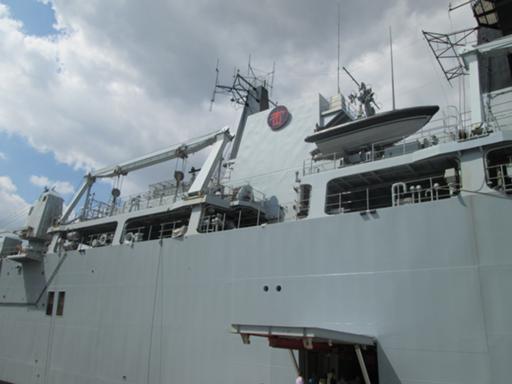
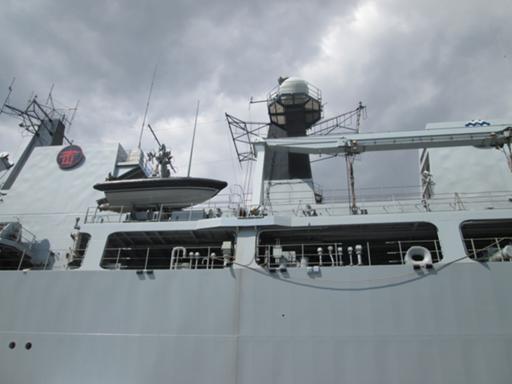
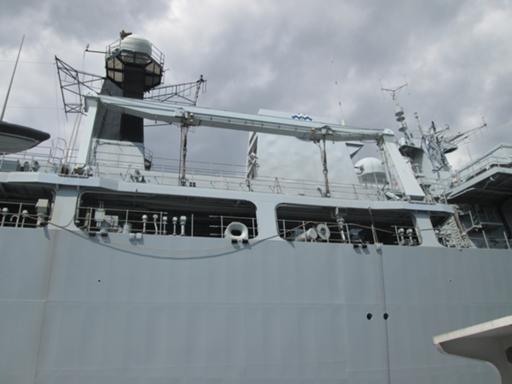
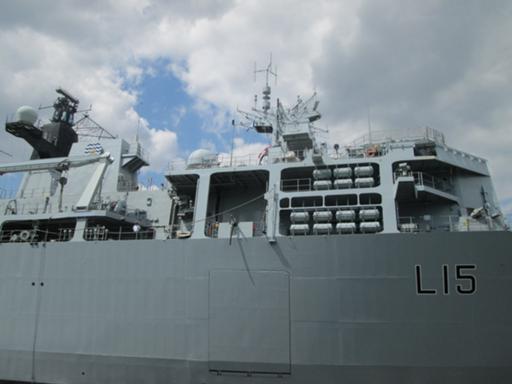
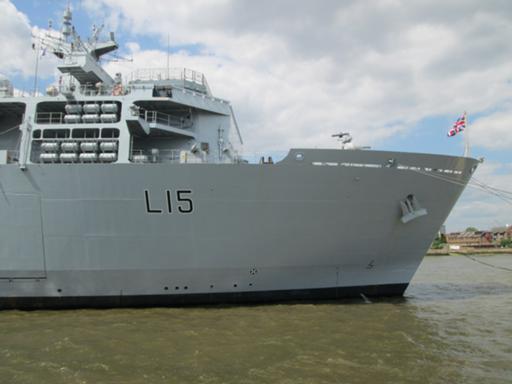
Another vehicle access hatch on the starboard side.
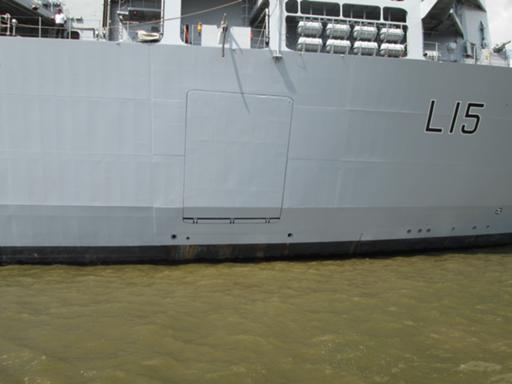
Forward Goalkeeper mount.
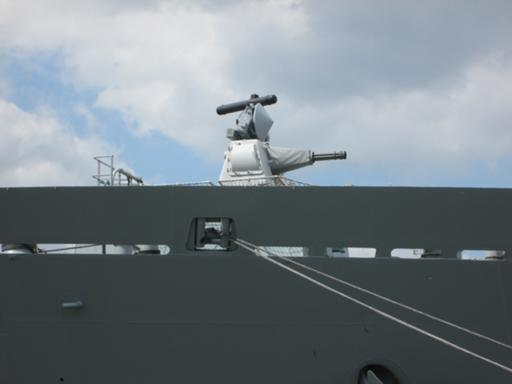
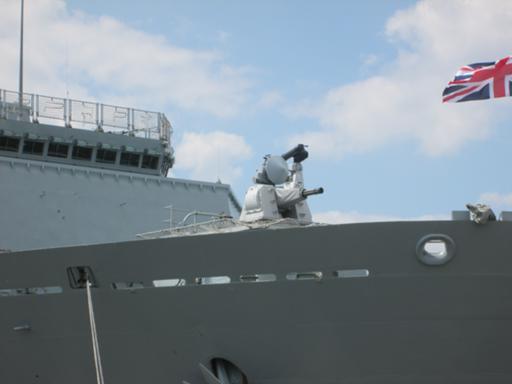
Moving away. We didn't get to see the forward deck area at all; it's
kept fairly clear around the box on which the Goalkeeper is mounted.
One wonders why the superstructure wasn't moved forward a bit and a
hangar squeezed in, rather than keeping helicopters on the open deck.
The Dutch-Spanish Rotterdam LPD can do it…
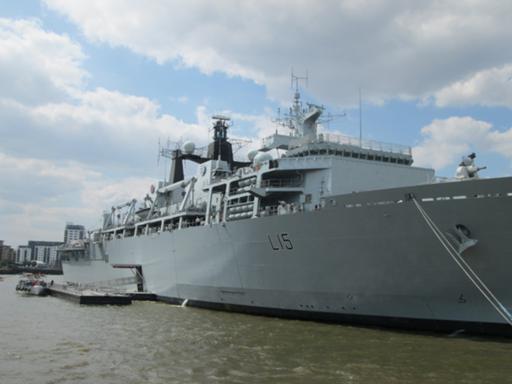
Bow on. We hadn't seen the "real" bridge either (though it seems clear
that the ship's meant to be operated from the command centre most of
the time), or any machinery spaces.
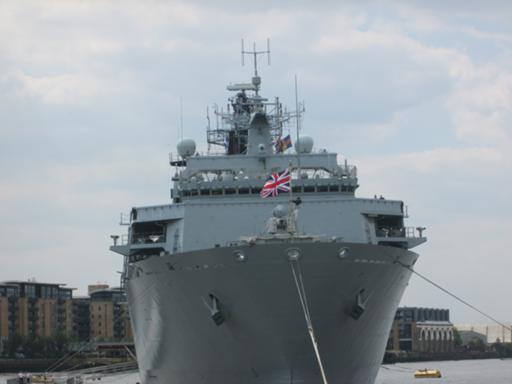
The Old Brewery was conveniently nearby.
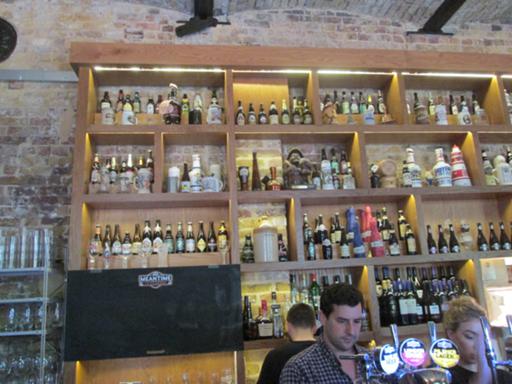
There was less complexity visible than on Belfast or my dim memories
of London; obviously some of that is because there were substantial
areas we weren't allowed to see, but also because this isn't a
particularly combatant ship, so there are no big guns or missile
launchers (and ancillary equipment for either) that one would see
aboard such. The payload of this ship, the reason she exists, is the
big empty space in the middle.
Comments on this post are now closed. If you have particular grounds for adding a late comment, comment on a more recent post quoting the URL of this one.